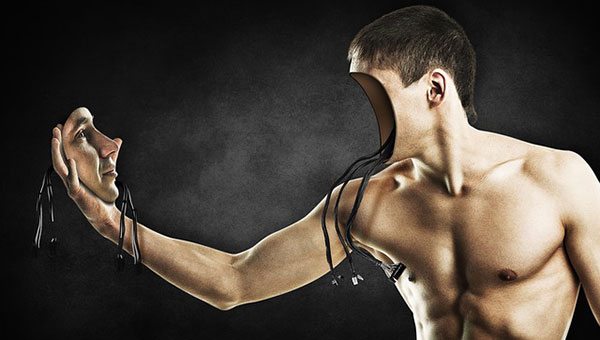 If we could time travel five, 15, or 20 years into the future, what would we see? It doesn’t take a team of futurists to imagine a continuing evolution of intelligent, robotic, connected, digital, and social technology innovations persisting for decades to come.
If we could time travel five, 15, or 20 years into the future, what would we see? It doesn’t take a team of futurists to imagine a continuing evolution of intelligent, robotic, connected, digital, and social technology innovations persisting for decades to come.
Automated, smart, digitised, and autonomous are some of the design qualities likely to define the future tools we’ll see across society: business, manufacturing, retail, service, agriculture, military, healthcare, leisure, entertainment, domestic, and even sexbots. Surveillance, omniscience, and control are some key features of the coming waves of gadgetry that could put seemingly god-like powers into the hands of mere mortals.
But reality is not as mythical as we might imagine. While exciting images of the high-tech future captivate us, it is essential to stay grounded about the future. What is less readily conjectured among most future predictions is a depiction of the way that disruptive technologies may actually affect daily life in the future, once they become normalised and somewhat taken for granted.
How can, and should, we retain humanity in the face of disruptive technology? This article explores the various ways that robotic and connected devices might disrupt the future of day-to-day life for the better. In my view, envisioning the possible products of the future means envisioning the people who would use them – not as fictitious characters, but as real people with similar problems, dilemmas, emotions, relationships, and challenges to those we have today.
Understanding and seeing hypothetical future customers and employees as people experiencing some of the same universal human dramas that we do today, the future feels a little more relatable. Below are 20 possible connected and robotic devices that might impact our lives between today and 2040.
Robotics
- Personal Drone Security – Small drones may fly around a person’s property, constantly monitoring and guarding against security threats like trespassers or burglars. Additionally, they would alert owners of their guests’ arrivals, and be able to confirm the guests’ identities through video and facial recognition software.
- Autonomous Cars – Self-owning independent taxis will earn fares for each ride, sharing revenue with those who manufacture, service, and refuel them. The cars would work in self-managing, self-insuring networks – covering each other in the event of increasingly rare incidents. As autonomous technology grows ever smarter, accidents will only tend to arise when human-driven vehicles are in collision with autonomous cars.
- Rescue Drones – Drones are already available that can target individuals in need of emergency assistance, and either airlift them to safety or provide them with vital life-saving equipment. These drones will become ever more sophisticated and capable, with the ability to undertake more complex search and rescue missions and perform a growing range of medical procedures on the spot.
- Autonomous Drones Monitoring and Repairing Infrastructure – Constant status monitoring via connected sensors and use of autonomous repair-bots may allow for continuous and pre-emptive upkeep of physical infrastructure. As soon as a sensor detects a pothole or crack in a bridge, the appropriately skilled fleet of autonomous maintenance drones and robots could be dispatched to repair the bridge before further damage can occur. A step on from pre-planned maintenance routines could be fully autonomous inspection drones. Equipped with AI enabled technology, they would observe and report back on the target infrastructure: power lines, railway lines, hyperloop evacuated tubes, tunnels, and bridges. Links to automated or manual repair and maintenance teams would provide information to enable timely deployment of the correct repair assets.
- Autonomous Drones for Crowd Control and Border Security – Autonomous drones with AI enabled behaviour recognition and infrared capabilities could patrol border areas and other sensitive security situations when there are risks to safety and the potential for social unrest. On identification of security breaches or potential anti-social behaviour, the appropriate human or automated resources could be mobilised and deployed to counter the risk.
- Digital Twins – After collecting massive amounts of data about a person through connected devices, robots would be able to replicate this person’s behaviour and responses. In fact, your digital twin could attend a meeting for you and comment on your behalf. You twin could also capture and summarize the entire conversation including analysis of the body language and micro-facial expressions of the other participants and then report back.
- Robo-Mummy – Continuous monitoring of health indicators would allow your devices to order what you need to prevent you getting sick. Your devices would try to nudge your decision making towards a healthier lifestyle and what’s best for you.
- “No Strings Attached” Sex – Future personal pleasure offerings could include customized multi-sensory virtual reality (VR) experiences coupled with sophisticated sex toys to enhance the range of multi-sensory sensations for the user. Over time the technology will advance such that the AI personality of your digital partners could be transferable between different sex robots and devices. Hence your settings will be up to date in whatever interface you would like to use.
- Personal Robo-Delivery – Small autonomous robots are already delivering fast food and mail – soon they could run daily errands while their owners work. As our grocery order or dry cleaning becomes ready, the robot is alerted and sets out through the town to pick up the orders from the local shops.
- Droneloo – Single user droneloos could be summoned on demand – dropping into the midst of a crowd at an open-air festival, concert, public rally, or sporting event to enable those caught short to relieve themselves in privacy.
- Self-Filling Vertical Farmer’s Market Bag – Smart, self-filling, self-unloading, reusable bags could communicate with smart homes and smart appliances to place new orders from a local vertical farm or supermarket. The bag would fill itself with groceries at the point of origin, be delivered via autonomous vehicle or drone, unload on arrival, and be returned empty on the next delivery run. This could save time for shoppers, support local produce, and discourage food waste.
- A Robotic New Year’s Eve in Trafalgar Square – Autonomous ambulances with in-vehicle robots could provide immediate first aid, carrying out more complex tasks under the guidance of remote video-linked doctors. Personal drones would extract injured parties from the crowd and transport them to the ambulance. Autonomous food trucks would use drones to deliver the food to the individual wherever they stand without having to leave their spot.
- Robotic Farming – Our farms may become entirely automated. Intelligent robots will plan, plant, water, weed, fertilise, and harvest entire crops at the perfect time based on a continuous feed of connected sensor information. An apple at a grocery store may never have been touched by a human hand until the moment a customer picks it from the shelf or eats what their robo-assistant has selected.
Connected Devices
- Life Automation – Connected devices and ‘life automation’ apps will share your agenda and habits to plan the flow of your day. Music from your surround system would automatically keep playing in your headphones after you leave your home and switch to the in-car system when you get behind the wheel. The home heating system would turn on when you are 10 minutes away. Food would be delivered or ready to serve minutes after you walk in the front door.
- Never Alone – The days when you could get off the grid are coming to an end. Although you could be physically alone, your digital footprint, assembled through all the connected devices and sensors on and in your body and around you, could reveal your whereabouts in a microsecond.
- Automated Sharing – Sensors in devices and objects would identify opportunities to participate in the sharing economy, i.e. rent or loan out your stapler, motorcycle, hammock, or home for a day. Local internets and intranets could provide neighbour-to-neighbour sharing for free or via a charge included in local taxes or building fees. Robots would undertake deliveries and ensure building safety.
- Environmental Monitoring – As more and more sensors are deployed, we can expect environmental monitoring to reach a new high. A person or their autonomous car may receive tailored alerts to avoid certain streets as pollution levels are slightly elevated in those areas. Walkers might be alerted to avoid specific parks as weather conditions have caused weeds to bloom that may trigger their allergies.
- Unisex Utility Jacket – This totally safe and secure everyday fashion item would keep mobile devices connected using built-in chargers and a personal private data network. The jacket might also collect, convert, store, and distribute kinetic and heat energy from the wearer’s body to sell back to the local power grid.
- Bathroom Blocker – This personal sensor detector and signal blocker would prevent smart toilets from testing urine samples for illegal and/or enhancement drugs. It would also detect and defend against bathroom hackers looking to steal our medical identity.
- AI HR – Artificial intelligence is already changing the way HR operates. Perhaps we are edging toward humanless HR with AI powered recruitment, selection, appointment, onboarding, performance monitoring, payment (employees, contractors, gig-bots), and offboarding based on automated needs and skills matching. The smart HR could also monitor us via all our devices and detect factors such as stress levels, distraction, the extent of social conversation we engage in, and when we are performing at our peak.
If we could interview our future selves, we would have many questions: What is the benefit of having a digital twin? What are the advantages (or disadvantages) of drone security? How do autonomous devices in our midst change the quality of life? What does the day-to-day implementation of biometrics feel like? Do robots do everything to feed us from farm to table? What do you consider ‘smart’? Does technology make life better?
We can only imagine what they would say.
Rohit Talwar is the CEO of Fast Future Research, a global research and consulting company that specializes in identifying future growth industries and helps governments and global companies to explore and respond to the sectors, ideas, trends and forces shaping the next five to 20 years.
The views, opinions and positions expressed by columnists and contributors are the author’s alone. They do not inherently or expressly reflect the views, opinions and/or positions of our publication.

